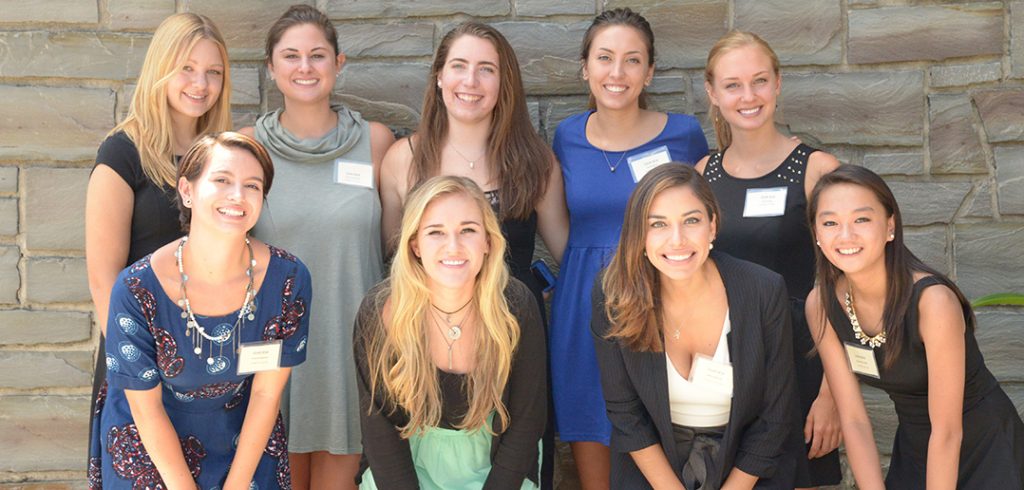“I didn’t even realize it,” said Evon Hekkala, PhD, assistant professor of biology and a mentor for the program.
“It’s a really impressive group and they’re a great set of role models,” said James D. Lewis, PhD, professor and chair of the biological sciences department. “Given the many obstacles and issues women in STEM face, it’s great to highlight their accomplishments.”
At a symposium held on Aug. 3 at the Rose Hill campus, the women presented findings from research they conducted over the course of the summer.
“Undergraduate interest in the sciences has been about 50 percent men and 50 percent women for a long time,” said Hekkala. “But later in their academic career we often lose women, so we’re hoping that with a program like this we can retain them.”
“I think it’s awesome,” said Richard Flamio, a master’s candidate and research assistant at the Calder Center.
Flamio said he took note of the class composition at the beginning of the semester, but the novelty dissipated once the group got down to the business of conducting research. Students from Fordham, Seattle University, and Providence College studied ticks, rats, and sunfish, to name just a few of the topics.
Rising senior Victoria Sieverson of Fordham examined the efficacy of catnip oil in repelling ticks. With five volunteers offering their arms for the cause, she used a small square bandage bordered by the catnip oil and placed a tick at the center of the bandage to watch its response. The tick avoided oil, but the oil’s potency decreased after only two hours. She said her collaborators were unperturbed by the critters.
“The volunteers work in the Vector Ecology Lab so they weren’t scared of being around ticks or having them on them,” she said. “Any fears were muted by using disease-free ticks from the Center for Disease Control.”
Samantha Levano, a rising junior at Fordham, took to the lake at the Calder Center to study the fish. She mapped the nests of two sunfish varieties: the pumpkin seed sunfish, with its distinctive stripe pattern, and the red breast sunfish, which derives its name from its rust-colored underbelly. She mapped the nests of the two varieties, observed the fishes’ behavior, and even caught both varieties mating on video—a rare feat considering the females’ skittishness, she said. Females generally avoid of the lake’s perimeter where the males tend to nest and wait for females to lay their eggs. Levano also hypothesized the existence of a hybrid of the two species, and eventually captured an example of a fish with both the striped pattern and the red belly.
Laura Angley, a rising senior from Providence College, examined pathogens and parasites on rats, building on the work of her mentors, Fordham associate professor Jason Munshi-South, PhD and Jonathan Richardson, PhD, an assistant professor at Providence College. She found that even though some rat communities may be geographically close to each other, they don’t necessarily share similar pathogen communities. As Munshi-South’s well-publicized research has shown, rat communities tend to isolate themselves to a few city blocks. Likewise, Angley found that the parasite communities and pathogens were similarly isolated to the same blocks as their hosts. As such, disease risk to humans doesn’t necessarily relate to the number of rats in a city block as much as it does on pathogens and parasites present, said Angley.
Richardson said that regardless of whether the students decide to continue to examine ticks, sunfish, or rats, the skills they obtained in developing their projects “can be put in their tool box for use in more sophisticated research.”
“The more tools you incorporate and learn in your research, the more competitive you’re going to be in the future,” he said. “Even if they decide not to go into biology, the skills they learned here will help them be better citizens who understand science.”


